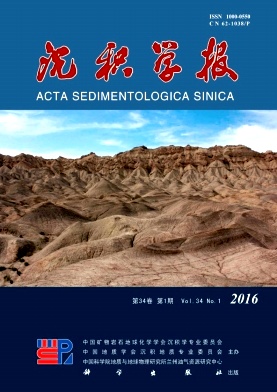The Response of Sediment Flux of Jiuxi Basin in the Northern Boundary of Qilian to the Tectonic Uplift and Weathering-denudation History
doi: 10.14027/j.cnki.cjxb.2016.01.004
- Received Date: 2015-02-09
- Rev Recd Date: 2015-04-26
- Publish Date: 2016-02-10
-
Key words:
- northern boundary of Tibetan Plateau /
- Jiuxi Basin /
- sediment flux /
- control factors /
- Cenozoic
Abstract: The Jiuxi basin, an inland basin located along the northeastern boundary of Tibetan Plataeu, is rich in thick and consistent Mesozoic-Cenozoic sedimentary strata, which precisely recorded the tectonic evolution of thesturctures and environment of the basin and its adjacent mountains. Based on Cenozoic sediment fluxes study of Huoshaogou, Shiyangjuan, Laojunmiao, Ciyaokou, Hongliuxia, Dahongquan, Wenshushan section of Jiuxi Basin. We founded that: The increase of sediment flux from Huoshaogou(40.5~33.3 Ma) to Baiyanghe(30.9~23.8 Ma) formation under arid climate was caused by acceleration weathering of Qilian Shan and consistent depression of Jiuxi Basin; In the Early Miocene time(Gongxingshan section 23~14 Ma), the sediment flux during the period was low. We attribute this change to the quite tectonic activity, although the climate was relatively warm during this time interval; In the Middle Miocene time(Getanggou section, 14~8.3 Ma), the sediment flux was controlled by the effect of both climate and tectonic activtities of North Qilian Shan; In the Late Miocene time(<8.3 Ma, Niugetao-Yumen Formation), the sediment flux was high and sharply increased. This change was responsible for the quickly uplift of North Qilian Shan, and the following acceleration of weathering and denudation.
| Citation: | MA LiFang, BAO Jing, YING Hong, HU ChunHua, ZHONG SiRui, YANG ShuFen, SONG ChunHui, MENG QingQuan. The Response of Sediment Flux of Jiuxi Basin in the Northern Boundary of Qilian to the Tectonic Uplift and Weathering-denudation History[J]. Acta Sedimentologica Sinica, 2016, 34(1): 49-57. doi: 10.14027/j.cnki.cjxb.2016.01.004 |






 DownLoad:
DownLoad: